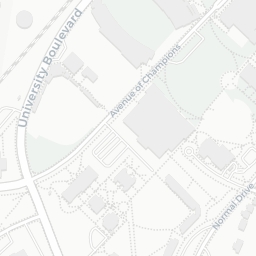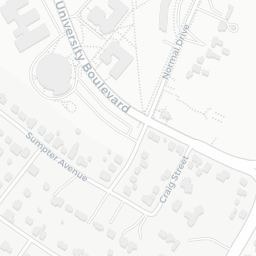Components and Objectives - School of Teacher Education
Components and Objectives
Heinich and his colleagues (2002) suggest that well written objectives have four parts. They call these parts the ABCD's of instructional objectives.
A. Audience
The audience is the group of learners that the objective is written for. Objectives are not written for the teacher.
This is often written "the learner" or "the student"; however, it could be written as specific as "The third grade science student".
B. Behavior
The behavior is the verb or observable action/behavior that describes what the learner (audience) will be able to demonstrate, perform, or exhibit after the instruction.
This is the heart of the objective and MUST be
- measurable
- observable (visible or audible)
- specific
Examples:
- Be able to dance.
- Be able to interview.
- Be able to paint a picture of a mountain.
In each of these examples you can observe behavior. If a statement does not include an observable, visible, or auditory behavior or performance, then it isn't yet an objective. Therefore, you should modify your objectives until it answers the question, "What will the learner be DOING when demonstrating achievement of the objective?"
Here are a couple of poor examples:
- Be able to understand mathematics.
- Develop an appreciation of music.
If you apply the question above, what would somebody be doing if they were "understanding" mathematics or "appreciating" music? There's really no way to observe "understanding" or "appreciating" since both of those statements describe abstract states that are not directly observable.
See Section 5 for more information about verbs to use in writing objectives.
C. Conditions
Conditions are the circumstances (under commands, materials, directions, etc.) which the objective must be completed. All behavior relevant to intended student learning outcomes can best be understood within a context of the conditions under which the behavior is to be performed or demonstrated. The location of the condition component in an objective may be at the beginning of the sentence or after the behavior component.
- What will the learners be expected to use when performing (e.g., equipment, tools, forms, calculator, charts, etc.)?
- What will the learner be allowed to use (or not use) while performing (e.g., checklists, notes, textbook, or other study aids)?
- What will be the real-world conditions under which the performance will be expected to occur (e.g., on top of a flagpole, under water, in front of a large audience, in a manufacturing plant)?
Examples:
- Given a case study, diagram, clinical problem....
- After completing the reading....
- After participating in a PowerPoint workshop....
- Using the course textbook and any online material…
- Given a standard set of tools and a malfunctioning motor...
- Using a metric ruler...
- Given a set of whole numbers...
- In the presence of an irate customer...
- Without the aid of class notes...
- Using only a screwdriver...
- Given a fully-functioning video camera...
- Given a list of chemical elements...
Notice there is no mention of the description of the instruction that precedes the initiation of the behavior. The instruction that leads to the behavior should never be included in the actual objective.
D. Degree
The degree describes the degree of measurement, the standard, or criteria that the learner must achieve to demonstrate an acceptable performance. It describes how well the behavior must be performed to satisfy the intent of the observable behavior. In other words, what degree of accuracy does the learner have to demonstrate in order that his/her performance will be judged as proficient or mastered the objective?
The level of achievement indicating acceptable performance or mastery of the objective may include the following:
- To a degree of accuracy; e.g., 90%.
- To a stated proportion; e.g., 3 out of 5 or a minimum of 3.
- Speed - within a given period of time; e.g., within 3 minutes.
- According to the information given in the text, lab manual, lecture, notes.
- In compliance with criteria presented by the instructor; e.g., scoring Proficient or better on the scoring rubric for the assignment.
- In accordance with recommendations of some external organization or authority; e.g., in compliance with all ISTE standards.
Putting it all together
What is the intended result of instruction for the learner? Objectives should communicate expectations and learning outcomes to both the learner and teacher answering these three questions:
- Who is learning?
- What should the learner be able to do?
- Under what conditions?
- How well?
Well-written behavioral objectives make development of assessment and instructional activities an easy job.
If any of the following conditions occur, the objective should be rewritten:
- you cannot develop assessment measures.
- you are having a difficult time specifying instructional activities.
- you find any exceptions or loopholes as a way of meeting the objectives.
Learning to write instructional objectives that describe what you want takes patience and practice.
Example
Here's an example of an objective containing all four components:
Students will tell the time represented on an analog clock to the nearest minute.
“Students” tells the audience,
"tell the time" represents the behavior,
"analog clock" represents the condition,
"to the nearest minute" represents the degree.
Bad : The student will demonstrate metric measurement of length.
Better: Given a metric ruler, the students will measure the length of common linear objects
to the nearest millimeter.
Bad : The students will learn about objectives.
Better: After completing the online objectives tutorial, the student will construct five
well-written instructional objectives with all four critical components scoring Proficient
or better on the scoring rubric.
Bad : The students will solve addition problems with 80% accuracy.
Best: Given two numbers not written in equation form, the students will place the numbers
in equation form and add them together with some borrowing with 80% accuracy
The School of Teacher Education
Gary A. Ransdell Hall, Office 1005
1906 College Heights Blvd. #11030,
Bowling Green, KY 42101-1030
Additional Information
Program Info




















